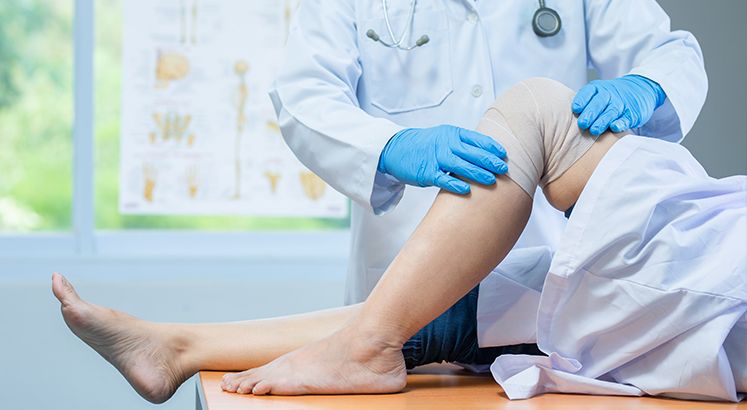At Arete Orthopaedic Centre, Dr LS Wang’s special expertise in sports injuries mean that we are
able to diagnose and treat a full range of injuries arising from sports and exercise.
As an avid sportsperson himself, Dr Wang fully understands what it is like to be faced with an
injury, and empathises with the fears and frustration that athletes go through.
To that end, he strives to facilitate a full and speedy recovery for them as far as possible.
- Reconstruction of Knee Ligaments (ACL/PCL/MCL/LCL)
- Meniscus Repair
- Cartilage Repair
- Joint Fractures & Dislocations
- Sprains and Strains
ACL Reconstruction

The anterior cruciate ligament (ACL) is the soft-tissue structure in the knee that connects
the femur to the tibia. When partially or completely ruptured, the torn ligament is replaced
with a substitute tissue graft to mimic the natural ACL.
The tissue graft is taken from the patient's own hamstring, quadriceps or patellar tendon,
or from a human organ donor; over time, the tendons heal and replace the original damaged
ACL to provide joint stability.
Performed using minimally invasive arthroscopic techniques, the ACL reconstruction surgery
is an outpatient procedure in which patients can go home on the same day as their surgery.
Knee Replacement

The most common reason to have a knee joint replaced is to relieve severe pain caused by
osteoarthritis. During the knee replacement procedure, damaged cartilage and bone are
removed, and replaced with prosthetic devices.
Partial replacement – only the damaged part of the knee cartilage is replaced with a prosthesis.
Total replacement – the painful arthritic knee joint is replaced with an artificial joint.
Revision knee replacement – an original prosthesis is removed and a new artificial joint is put in place.
Hip Replacement

Hip replacement is a surgery to replace a worn-out or damaged hip joint with an
artificial one. While traditional hip replacement involves cutting major muscles to
access the hip joint, direct anterior and direct superior approaches utilise minimally
invasive techniques to replace the hip joint without cutting through key muscles or
tendons.
Direct Anterior – a small incision is made near the front
of the hip to allow for removal of damaged bone and cartilage, and implantation of an
artificial hip.
Direct Superior MIS – a small incision is made at the
upper side of the hip, and involves detaching some muscles and tissues to reach the hip
joint. By doing so, the surgeon avoids cutting into key muscles.
Meniscal Repair

Degenerative arthritis or forceful twisting of the knee, especially during contact sports, can contribute to meniscus tears. A meniscal repair is an outpatient surgical procedure to repair a torn meniscus via minimally invasive surgery. The torn pieces are sutured together so they can heal on their own.
Cartilage Repair

When articular cartilage, the smooth cushion that lines the ends of bones where they meet at joints, becomes worn or damaged, one may experience reduced mobility and quality of life, even early arthritis. As cartilage injuries do not usually heal well on their own, surgical repair is the treatment of choice to form cartilage-like tissue around the joint.
Comprehensive Trauma and
Fracture Fixation

Orthopaedic trauma care encompasses a wide spectrum that range from simple fractures to severe life-threatening accidents involving multiple broken bones. Through the use of splints, casts and implants, fracture fixation stabilises misaligned, broken bones to enable healing.





